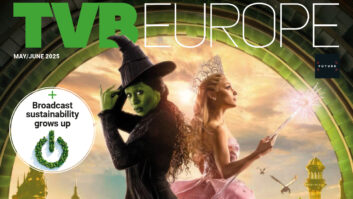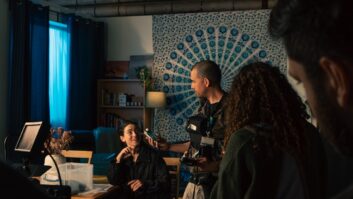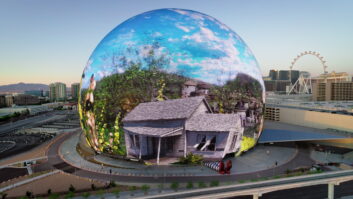The first part of Jon M Chu’s adaptation of Wicked has smashed global box office records, garnered countless award nominations, and had everyone singing Defying Gravity for months. Dimension Studio’s Ozan Akgun explains how the company used volumetric capture to create the film’s pixel-perfect crowd scenes
How did Dimension get involved in Wicked?
Wicked’s production team approached Dimension to extend crowd scenes for some of the Munchkinland and Emerald City shots, which they wanted to look busier and more vibrant.
Filming was already under way but working with our volumetric digital crowds pipeline, the client could volumetrically capture the supporting cast on-set using our mobile capture stage.
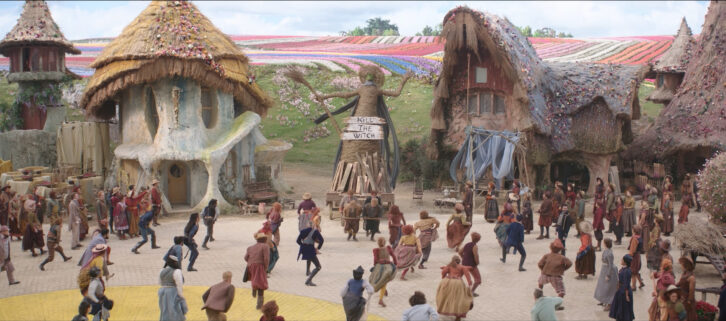
It was Dimension’s role to volumetrically capture the background actors who were in full costume and make-up, process the data and hand it over to Framestore, who would then composite them into the shots of Munchkinland and Emerald City, alongside the other VFX work they were doing on the scenes.
The nature of the project, and how quickly it came together meant that Dimension needed to run pipeline tests with the VFX team, and then be able to deploy our volumetric capture shoot team at short notice, while our processing team were on standby to handle the data and produce the final assets before hand-off. Our team was about 16 people who looked after the production, logistics, capture and delivery.
How did you use the Polymotion Truck to capture the extras’ performances?
The Polymotion Truck is a partnership between Dimension and MRMC. Dimension originally designed the truck to integrate an expanding state-of-the-art volumetric capture stage that leveraged our Microsoft volumetric license.
For Wicked, we deployed the stage to Elstree Studio and over two days, we captured the supporting cast while they were in full costume and make-up. To accommodate the wardrobe that was green—a lot of green for Emerald City—we repainted and covered the stage interior from green to blue screen, ensuring the background wouldn’t interfere when we needed to key it out to create the assets that Framestore could use.
This set-up allowed Dimension to capture actors as 3D assets without them needing to move locations or revisit the costume, hair, or make-up departments.
What technology did you use?
For our volumetric capture work in film, we tend to deploy stages of between 70-110 cameras, in order to provide optimal data capture and asset quality. For Wicked, the stage was equipped with 106 cameras: 53 RGB and 53 Infrared cameras, with 96 positioned around the capture volume facing inward, and 10 mounted above, pointing downward, to achieve optimal results with any kind of performance. Our tech stack is based on the Microsoft Mixed Reality Capture solution, which is now licensed from Arcturus.
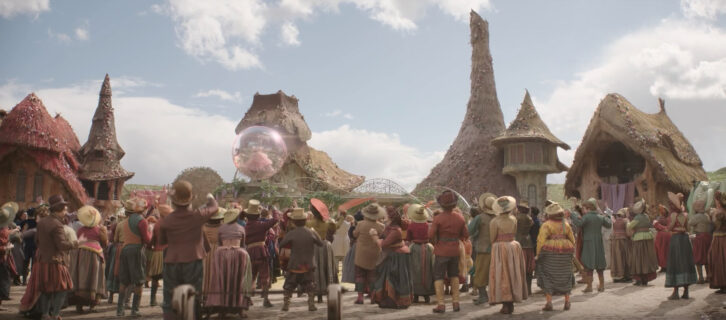
This technology is considered best-in-class and supports 10-bit colour, which is important for the VFX pipeline and our work in film. Dimension is the only volumetric capture studio that has developed a proven volumetric digital crowds pipeline. Previously this was used for Sony Pictures Whitney Houston: I Wanna Dance With Somebody, and Peacock’s Those About To Die. So our pipeline has been used to bring crowds to life in ancient Rome, ‘80s pop concerts, and now the land of Oz.
How many performances did you capture? And how did you ensure that each one was different?
Dimension volumetrically captured 76 members of the supporting cast, under the direction of the Wicked team. The choreography and the desired action from the performances were pre-planned ahead of the talent being filmed in the volumetric studio. Each actor performed for one minute, cycling through the actions and reactions so that the crowd in the end result was consistent with what was happening in the scene. Dimension then processed 76 minutes of final content.
Read more about Dimension’s work on Wicked in the May/June issue of TVBEurope here.
